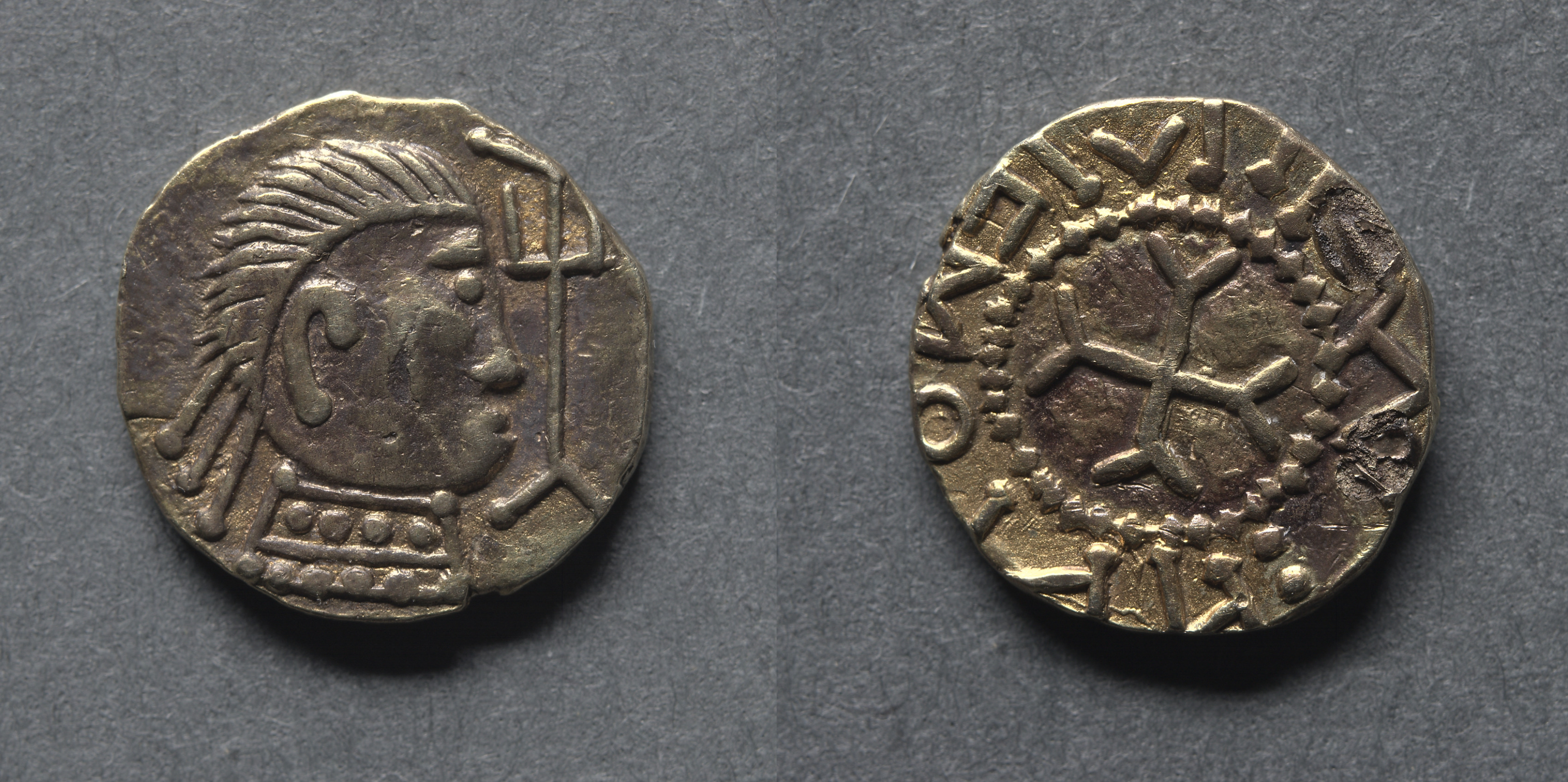The Cleveland Museum of Art
Collection Online as of April 25, 2024

Witmen Tremissis: Bust and Trident (obverse); Cross Fourchée (reverse)
early 600s
Diameter: 1.1 cm (7/16 in.)
The Norweb Collection 1969.159
Location: not on view
Did You Know?
The tremissis was a small solid gold coin of late antiquity and was a third of a solidus.Description
The Crondall Hoard is a hoard of coins that was found in 1828 in the village of Crondall in the English county of Hampshire. It is believed to date to the seventh century and was studied by Dr. Carol Humphrey Vivian Sutherland (1908-1986), an English numismatist. He characterized this coin as being a close copy of the Witmen prototype, the most common type found in the hoard. Witmen, or his design, featuring a bust on one side and a cross on the other, seems to have been very popular and remained popular for many years. During this time however the portraits grew cruder and cruder, the legends became even more blundered, and the gold content fell lower and lower.- -1969Mrs. Emery May Holden Norweb (1895-1984), Cleveland, OH, gifted to the Cleveland Museum of Art1969-The Cleveland Museum of Art, Cleveland, OH
- Cleveland Museum of Art, and Emery May Norweb. English Gold Coins, Ancient to Modern Times, On Loan to the Cleveland Museum of Art from the Norweb Collection. [Catalog. 1968. p. 18
- Year in Review: 1969. The Cleveland Museum of Art, Cleveland, OH (organizer) (January 27-February 22, 1970).English Gold Coins: Ancient to Modern Times. The Cleveland Museum of Art, Cleveland, OH (1963).
- {{cite web|title=Witmen Tremissis: Bust and Trident (obverse); Cross Fourchée (reverse)|url=false|author=|year=early 600s|access-date=25 April 2024|publisher=Cleveland Museum of Art}}
Source URL:
https://www.clevelandart.org/art/1969.159